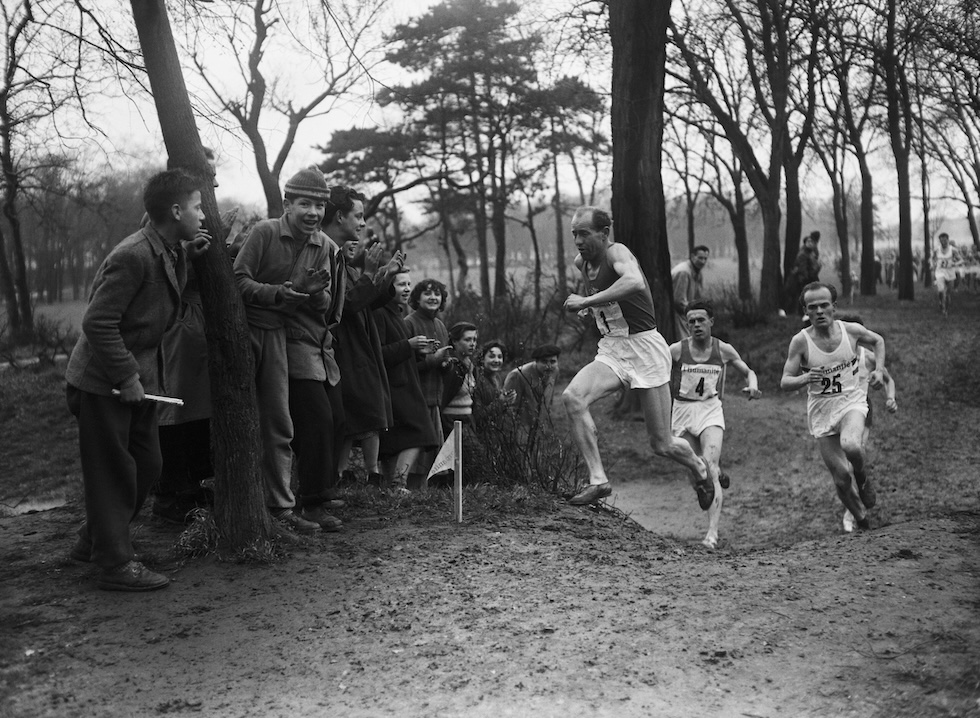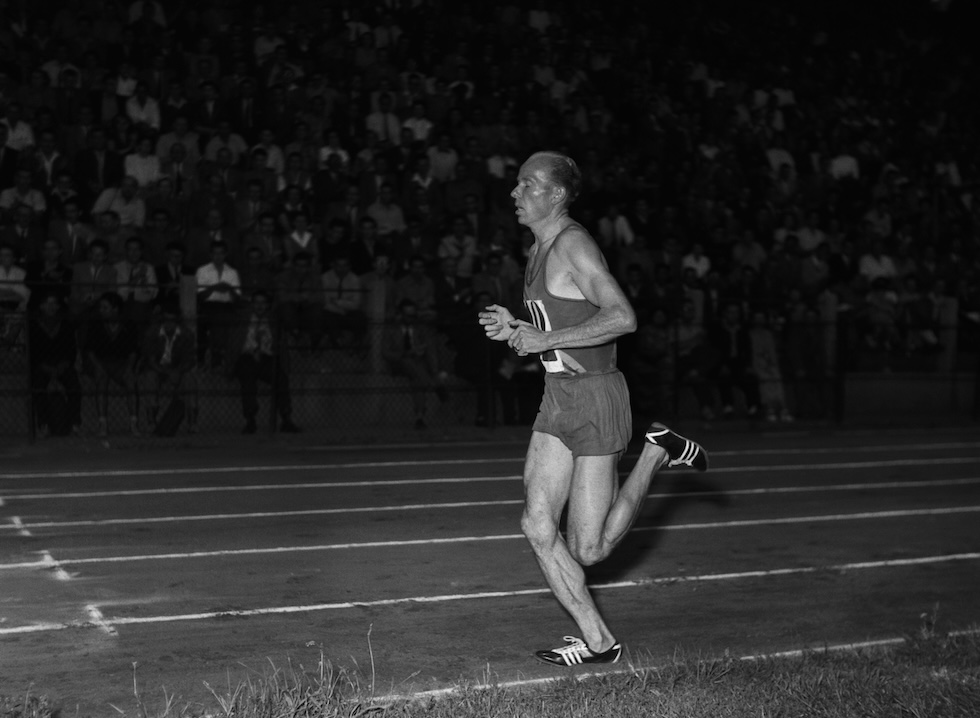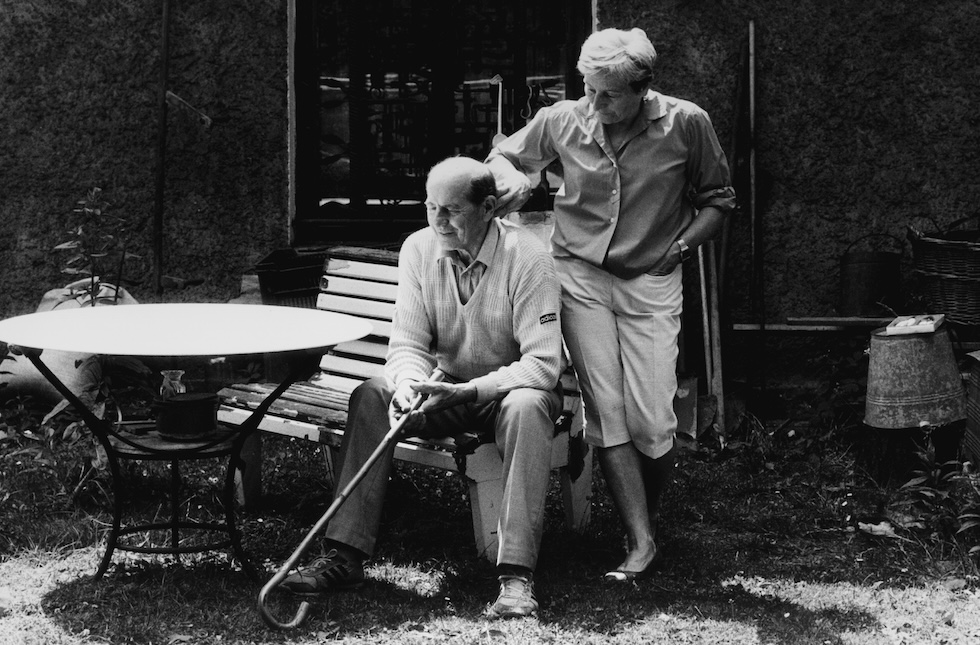On November 22, 2000, Emil Zatopek, middle distance runner and marathon runner, died. In conveying the news New York Times he wrote that he was “probably the best long-distance runner ever, certainly the clumsiest.” Zatopek won four Olympic gold medals and set 18 world records between 1946 and 1957. Even today he is the only one to have won the 5,000 meters, 10,000 meters and marathon in one Olympics, and even today, 25 years after his death, he remains one of the greatest runners of all time.
Zatopek won thanks to years of grueling training, while running in a somewhat disjointed manner: his legs were nimble and graceful, but from the waist up he was disorganized, disjointed in too many needlessly expensive movements. His arms moved everywhere, his head drooped, his expression sad. “I’m not talented enough to run and smile at the same time,” he once said.
The seventh of eight children, Emil Zatopek was born in Koprivnice, in the Moravian region of Czechoslovakia, on September 19, 1922. At the age of 14 he worked in a shoe factory and it was there that when he was 16 they made him take part in a running race organized by the factory. He discovered that he was good at it, and most importantly he liked it.
In 1948 he participated in the London Olympics, the first after the war. He won silver in the 5,000 meters and gold in the 10,000 meters ahead of French athlete Alain Mimoun, who later became his arch rival. In the 10,000, Zatopek beat many of his opponents, arriving nearly a minute ahead of second. In the 5,000, run two days later, he felt tired: he started slowly and was unable to recover in the final.
However, the Olympics he is most remembered for are the following Olympics, in 1952 in Helsinki, Finland. In the 10,000 he immediately took the lead and won, setting a new Olympic record, while second – again Mimoun – was 100 meters behind.
Two days later he also won the 5,000 meters final: a comeback, with a one second advantage over the second, who was also Mimoun. Given the extreme effort on that final lap, the finish of the 5,000 was perfect for seeing how badly – but how effectively – Zatopek ran.
A few minutes later, the Olympic women’s javelin throw final was won by Dana Zatopkova of Czechoslovakia with a throw of more than 50 meters. As you can imagine from the last name, Dana and Emil are husband and wife, and to date, that’s the only occasion where two couples have won Olympic gold medals on the same day. Dana and Emil were also born on the same day, 19 September 1922. Various chronicles say that when meeting him, and learning of the coincidence regarding their birthdays, he said to him: “We were born on the same day, what do you think about getting married on the same day?”.
It was also said that after the two won gold medals, Emil jokingly said that he had been the “inspiration” for Dana’s victory, who replied something like: «Really? Try to inspire some other girls and see if they can throw a javelin fifty meters.”
Dana and Emil in 1954 (Hulton-Deutsch Collection/CORBIS/Corbis via Getty Images)
Zatopek’s Olympics should have ended there, but he was persuaded to run the marathon as well, a race he had never competed in before. Britain’s Jim Peters said that towards the middle of the race Zatopek came up beside him and asked: “Jim, is this pace too fast?”. He answered jokingly: “No, not enough.” It seemed Zatopek kept his promise, increasing his pace and – bearing in mind he spoke several languages – spending some of the final kilometers talking to the photographer who, from inside the car, was nearby to document the race.
Zatopek arrived first at the finish line, this time giving the impression of being less tired than at the middle distance: Guardian he wrote that he looked like someone coming from “the busy streets of the country.” He won in 2 hours 23 minutes, two minutes ahead of second place. The sprinters from Jamaica, who had just won the 4x400m relay with a new world record, carried him and forced him to do a lap of honor while the crowd chanted “ZA-TO-PEK”. Meanwhile Peters has retired. Zatopek later said that the marathon was “a very boring race”.
In eight days, running qualifying and the final, he had won three Olympic gold medals: in the 5,000, 10,000 and marathon. At the next Olympics, in 1956 in Melbourne, a few days after hernia surgery, he ran the marathon again and finished sixth. The winner for the first time was Mimoun.
French writer Pierre Magnan wrote of him that he was “a man who ran like the rest of us”. For others – in terms of aesthetics and style – even worse than most of us. Like someone who has “just been stabbed,” like someone “who is fighting an octopus on a conveyor belt,” like someone with “a noose around his neck,” who is struggling to escape from it. It’s like “a boxer fighting against his shadow”.
He just reminds us that “athletics is not ice skating: you don’t have to smile and put on a cute face in front of the judges.”

Zatopek during a cross country race (Universal/Corbis/VCG via Getty Images)
Apart from nodding his head, Zatopek also made a lot of panting faces. According to Gianni Brera, “the saddest and most pathetic grimace” was made by someone who “looked like an old man with his legs bent and ready to die at the edge of the yard like an exhausted nag.” Zatopek’s nickname is “human locomotive”: partly because of the speed at which he runs, partly because of the way he grunts.
In the Runa book dedicated to him, Jean Echenoz wrote:
«Ignoring academic rules and any anxiety about grace, Emil continued in a heavy, haphazard, painful and jerky manner. He did not hide the violence of the effort which was visible in his contracted, rigid, distorted face, constantly distorted by a rictus that was painful to look at. His features changed, as if torn apart by terrible agony, sometimes his tongue stuck out, as if there was a scorpion in each shoe.”
Another book dedicated to him, Emil Zatopekwritten by Rick Broadbent, also tells how Zdeněk Hornof, a doctor at the University of Prague, “turned him over like a glove” to understand what was special about him: “He showed me his exam notes, the results of the various tests he had undergone, even x-rays of his heart and lungs”. But he said, “his heart was no bigger or stronger than that of any top athlete, his lungs were no bigger, and his vital functions were no more developed than those of many powerful long-distance runners.”

Zatopek during a running race (Universal/Corbis/VCG via Getty Images)
What’s special about Zatopek is the way he trains. Practically alone, and starting only from a few conversations with the powerful Finns he had fought in the 1940s, he developed what is now called interval trainingtraining based on repetitions of intense effort based on repetitions of intense effort alternating with low intensity. In his case, for example, dozens of laps of 400 meters, but run at a very intense pace. «Why should I train by running slowly», he said: «I already know how to run slowly, I want to learn to run faster».
Broadbent relates how Zatopek was also interested in metabolism and physiology and that “he was more than just an instinctive runner who trained harder than everyone else.”
In his years as an athlete and in the first years after retirement, Zatopek was close to the Czechoslovak communist party, and was celebrated as a national hero. However, in the late 1960s, he approached Alexander Dubcek’s “socialism with a human face”, and after the Prague Spring and subsequent Soviet intervention he was convicted and spent years working away from home and doing manual labor. In an article after his death New York Times He said that when they saw him busy collecting rubbish or cleaning the streets in Prague, people started helping him. He was then partially rehabilitated, found work at the Ministry of Sports and had the opportunity to travel and celebrate his victories. Among other things, also from Adidas advertisements.
Emil Zatopek died in 2000, Dana Zatopkova in 2020. Among the many things Zatopek is remembered for is Australia’s most famous middle distance race which is still named after him today, and for more than half a century.
Speaking of Australia, in 1968 Australia’s Ron Clarke – a middle-distance runner like him, who improved his world record but never won an Olympic gold medal – went to visit Zatopek in Prague, where he ran a race. Zatopek left him a package, which Clark didn’t immediately open thinking it might be a message that his idol and friend wanted to get out of the country. He opened it on the plane and saw that it was one of the Olympic medals Zatopek had won in Helsinki.

Dana and Emil Zatopek in 1989 (Miroslav Zajc/CORBIS/Corbis via Getty Images)



